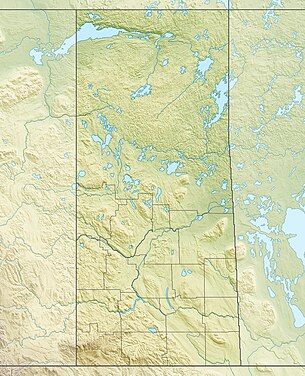| Looting of Battleford | |||||
|---|---|---|---|---|---|
| Part of the North-West Rebellion | |||||
 Fort Battleford National Historic Site | |||||
| |||||
The Looting of Battleford began at the end of March, 1885, during the North-West Rebellion, in the town of Battleford, Saskatchewan, then a part of the Northwest Territories.
Within days of the Métis victory at the Battle of Duck Lake on March 26, 1885. Cree bands sympathetic to the Métis cause and with grievances of their own began raiding stores and farms in the western part of the District of Saskatchewan for arms, ammunition and food supplies while civilians fled to the larger settlements and forts of the North-West Territories.
Prominent leaders of this uprising were Chief Poundmaker and Chief Big Bear. Poundmaker and his band had a reserve near present-day Cut Knife about 50 km (31 miles) west of Fort Battleford. Big Bear and his band had settled near Frog Lake about 55 km (34 miles) northwest of Fort Pitt but had not yet selected a reserve site.[1] Both bands were signatories of Treaty 6 and were unhappy in the way it was implemented by the Canadian government. The loss of the buffalo and the inadequate rations provided by the Indian agents kept the bands in a continual state of near-starvation.[2]
- ^ William Bleasdell Cameron (1888), The war trail of Big Bear (pp. 43–46), Toronto: Ryerson Press (published 1926), retrieved 2014-04-10
- ^ "Treaty 6". Encyclopedia of Saskatchewan. Canadian Plains Research Center, University of Regina. 2006. Archived from the original on 2013-11-15. Retrieved 2013-12-08.
